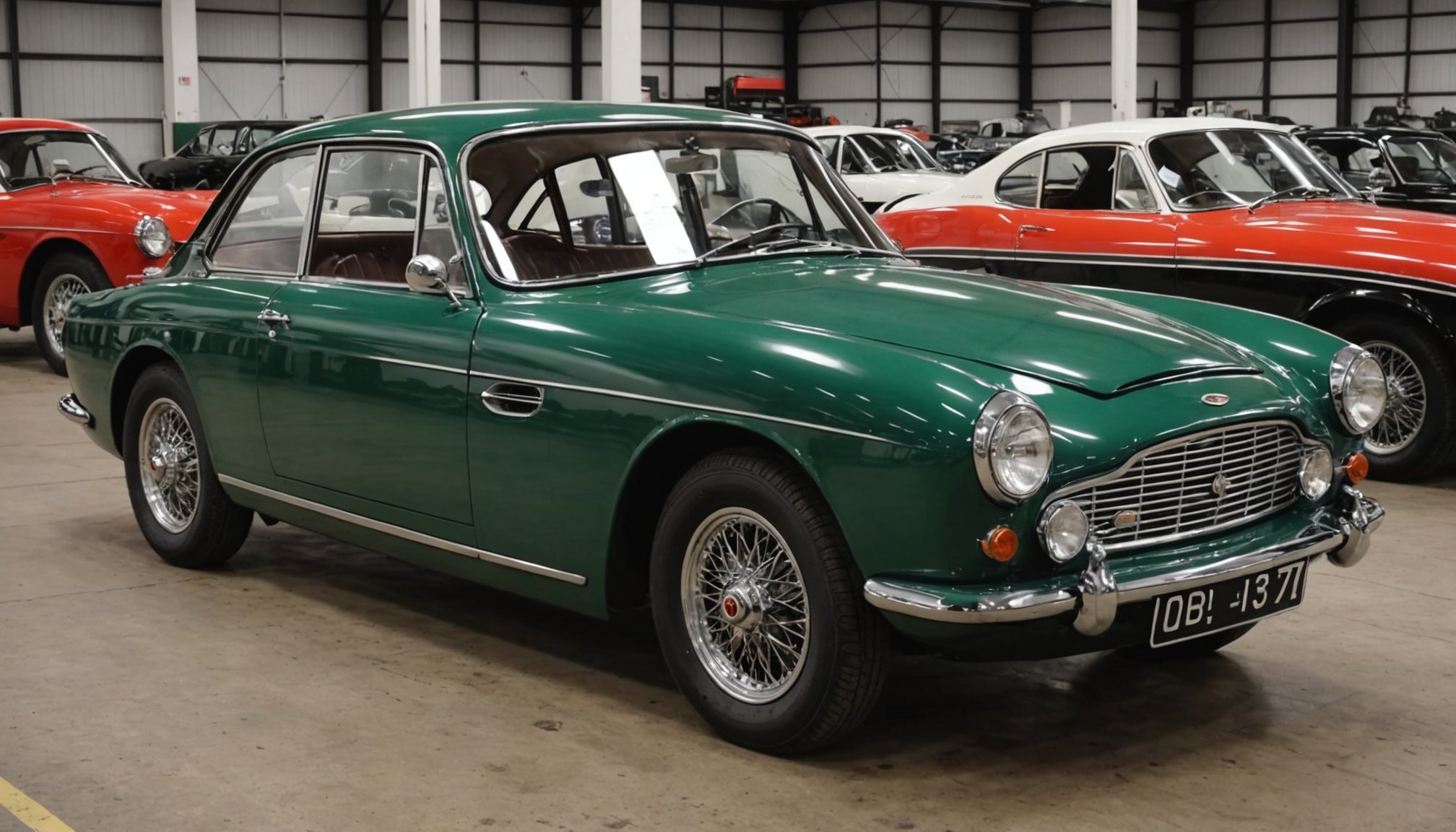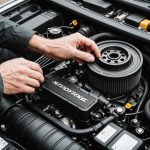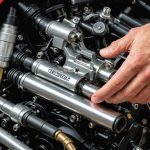Understanding the Importance of Authenticity in Replacement Parts
Owning a British classic car brings a sense of connection to history and craftsmanship. Preserving authenticity is crucial for maintaining its historical and financial value. Authentic replacement parts not only ensure the vehicle remains true to its original design but also significantly impact its performance and longevity. Genuine parts are designed to integrate seamlessly with the vehicle’s existing components, reducing the risk of early wear or mechanical issues.
Counterfeit components, although often cheaper, can lead to a host of problems. These imitation parts may not meet the stringent quality standards that genuine parts uphold, potentially compromising the car’s performance. Risks associated with using these parts include malfunctions, which could endanger the safety of the vehicle. Moreover, fake parts can cause irreparable damage to the vehicle’s intricate systems, leading to costly repairs.
Topic to read : Mastering the art of serpentine belt replacement in your luxury suv: a comprehensive uk guide
Beyond technical issues, the use of counterfeit parts in restoration projects can depreciate the vehicle’s resale value. A classic car with a history of using inauthentic replacements may struggle to find serious collectors or garner high auctions bids. Ensuring all replacement parts are authentic and sourced from reputable suppliers is essential for anyone looking to safeguard the integrity and value of their British classic car.
Maintaining the Value of Your Classic Car Through Proper Replacement Parts
Successfully maintaining the value of your classic car involves a proactive approach to care and restoration. Central to this strategy is the use of authentic replacement parts that align with the vehicle’s original specifications. Employing genuine parts ensures your car performs optimally, retaining both its aesthetic appeal and historical significance.
Also read : Elevate your british luxury car with expert interior detailing: a comprehensive step-by-step manual
To bolster the longevity of your vehicle, regular maintenance routines are pivotal. This includes routine checks on crucial systems such as the engine, transmission, and brakes, ensuring each component functions correctly with authentic parts. Moreover, preserving your classic’s elegance demands meticulous attention to detail, including cleaning and safeguarding the exterior and interior materials.
A thoughtfully curated replacement part strategy can substantially impact resale value. By meticulously documenting all replacements and repairs, buyers gain confidence in the car’s authenticity and condition. This transparency fosters trust and often leads to higher market valuations.
Authentic replacements not only enhance functional reliability but also resonate well with enthusiasts who value historical precision. In summary, adopting a thorough and informed approach in sourcing and maintaining parts can safeguard your vehicle’s worth, keeping your investment sound for years to come.
Step-by-Step Guide to Authenticating Replacement Parts
Ensuring you have genuine replacement parts is crucial for preserving your British classic car’s authenticity. A methodical approach to authenticating parts is essential.
Initial Inspection Techniques
Begin with a detailed visual inspection. Authentic parts often display precise craftsmanship and may have unique manufacturer markings. Look for clear, unaltered logos and numbers. Counterfeit items may show inconsistencies in quality or design.
Detailed Documentation Review
Next, examine any available documentation. Genuine parts should come with comprehensive records detailing their provenance. Documents might include a certificate of authenticity or a purchase receipt from a reputable vendor. Thoroughly reviewing these can confirm the legitimacy of the parts.
Proven Methods for Authenticity Verification
There are several methods to verify parts’ authenticity beyond initial inspection. Consider seeking the assistance of certification services that specialise in authenticating classic car components. They often employ advanced techniques to ascertain a part’s originality, giving you peace of mind.
Incorporating these steps ensures all replacement parts are genuine, safeguarding your classic car’s historical precision and performance. Rely on these inspection techniques and verification strategies to maintain the integrity of your vehicle.
Common Issues with Counterfeit Components
The counterfeit parts industry poses significant challenges for British classic car enthusiasts. Identification of these imitation components is crucial to maintaining your vehicle’s integrity. Poorly manufactured, these parts often mimic popular replacement parts like brake pads or filters, tempting buyers with reduced prices.
The implications of using counterfeit parts stretch beyond mere performance concerns. Cars fitted with imitation parts can suffer from reduced efficiency and increased wear, potentially leading to premature failure of essential systems. Such failures not only escalate repair costs but can also jeopardize the safety of the vehicle and its passengers. Counterfeit components lack the precise engineering required, resulting in poor integration with genuine car systems.
Moreover, engaging in the purchase or sale of counterfeit parts involves potential legal risks. Distributors may face fines or other penalties as these components often violate intellectual property laws. For consumers, unknowingly fitting counterfeit parts could void any warranty agreements.
Raising consumer awareness of these issues is vital. By educating buyers on the dangers and methods of detection, the industry can gradually mitigate the risks associated with counterfeit parts. Vigilance in sourcing and verifying components is key to protecting both the value and safety of your British classic car.
Reliable Sources for Authentic Parts
Acquiring authentic parts for your British classic car is vital to maintaining its value and performance. A primary consideration when sourcing these parts is relying on trusted suppliers known for integrity and quality. Reputable dealers often have longstanding relationships with manufacturers, ensuring the provenance of parts is well-documented and verifiable.
Reputable Dealers and Members of Clubs
Engaging with automotive clubs can be incredibly beneficial. These clubs often have networks of trusted suppliers and members with firsthand experiences to share. They may also host events where enthusiasts can trade authentic parts or consult with experts about maintaining vehicle originality.
Online Resources and Marketplaces
While many online platforms offer replacement parts, exercise caution. Always verify the certifications and reviews of suppliers before making a purchase. Legitimate sellers typically provide detailed product descriptions, authentic part numbers, and clear photos to facilitate visual identification.
Expert Recommendations and Certifications
Consulting experts in classic car restoration can provide valuable guidance. These professionals often recommend reliable sources and may even offer services for verifying part authenticity. With the proper understanding and resources, sourcing genuine replacement parts can be streamlined and secure, safeguarding your vehicle’s historical integrity.
Expert Testimonials and Case Studies
Expert Opinions and firsthand accounts play an invaluable role in understanding the impact of using authentic versus counterfeit parts in classic car restoration. Let’s explore what the experts and real-life examples reveal about maintaining your British classic car‘s integrity.
Testimonials from Restoration Experts
Classic car restoration experts consistently emphasise that using genuine replacement parts significantly enhances both the vehicle’s performance and its preservation. Many experts recount projects where the use of authentic parts not only retained the historical accuracy but also ensured superior reliability and longevity of the vehicle.
Successful Restoration Projects
A noteworthy example includes a collector who restored a vintage Jaguar using entirely authentic replacements. This adherence to originality led to a noticeable improvement in the car’s handling and overall driveability. Moreover, the car’s market value appreciated, showcasing the financial benefits of using legitimate parts.
Lessons Learned
Conversely, real cases of counterfeit parts usage often serve as cautionary tales. Enthusiasts report that initially cheaper components led to mechanical failures and, ultimately, extensive costs. Through these lessons, the importance of sourcing from reliable suppliers becomes clear, preventing both performance issues and preserving the vehicle’s worth.
Visual Identification: Authentic vs. Counterfeit Parts
Ensuring your British classic car is fitted with genuine components often begins with effective visual identification. Discerning authentic parts from counterfeit ones can be quite daunting, but paying close attention to certain visual cues can assist significantly.
Key Visual Features of Authentic Parts
Authentic parts frequently exhibit meticulous craftsmanship. Common identifiers include crisp, clean logos and precise engineering marks. These features are usually consistent and aligned with historical accuracy.
Differences in Craftsmanship and Materials
The quality of materials used in authentic components stands out noticeably. Authentic parts usually incorporate high-grade materials that are durable and visually consistent, whereas counterfeit parts often display subpar textures and evident imperfections. By examining the texture, weight, and finish, enthusiasts can sometimes distinguish authenticity at first glance.
Identifying Markings and Labels
Genuine components are typically adorned with unique manufacturer markings and labels. These might include specific serial numbers or batch codes, providing additional layers of identification. Any discrepancies in these markings, such as spelling errors or misshaped stamps, often indicate inauthenticity.
Understanding these elements is crucial for ensuring authenticity, thus protecting your vehicle’s value and ensuring it performs optimally. Familiarising yourself with these visual signs can empower you to make more informed decisions when sourcing parts.











